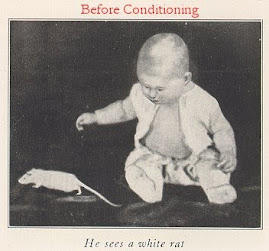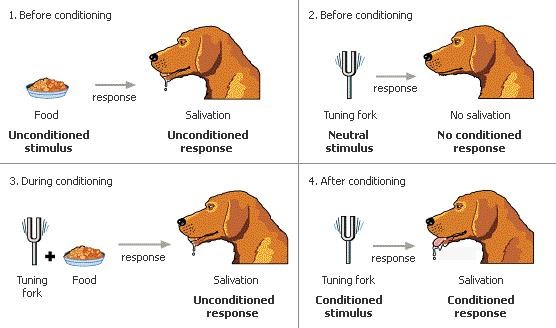

Operant conditioning is the use of consequences to modify the occurrence and form of behavior. Operant conditioning is distinguished from classical conditioning (also called respondent conditioning, or Pavlovian conditioning) in that operant conditioning deals with the modification of "voluntary behavior" or operant behavior Reinforcement is a consequence that causes a behavior to occur with greater frequency. Punishment is a consequence that causes a behavior to occur with less frequency
1. Positive reinforcement (Reinforcement) occurs when a behavior (response) is followed by a favorable stimulus (commonly seen as pleasant) that increases the frequency of that behavior. In the Skinner box experiment, a stimulus such as food or sugar solution can be delivered when the rat engages in a target behavior, such as pressing a lever.
1. Positive reinforcement (Reinforcement) occurs when a behavior (response) is followed by a favorable stimulus (commonly seen as pleasant) that increases the frequency of that behavior. In the Skinner box experiment, a stimulus such as food or sugar solution can be delivered when the rat engages in a target behavior, such as pressing a lever.
2. Negative reinforcement (Escape) occurs when a behavior (response) is followed by the removal of an aversive stimulus (commonly seen as unpleasant) thereby increasing that behavior's frequency. In the Skinner box experiment, negative reinforcement can be a loud noise continuously sounding inside the rat's cage until it engages in the target behavior, such as pressing a lever, upon which the loud noise is removed.
3. Positive punishment (Punishment) (also called "Punishment by contingent stimulation") occurs when a behavior (response) is followed by an aversive stimulus, such as introducing a shock or loud noise, resulting in a decrease in that behavior.
4. Negative punishment (Penalty) (also called "Punishment by contingent withdrawal") occurs when a behavior (response) is followed by the removal of a favorable stimulus, such as taking away a child's toy following an undesired behavior, resulting in a decrease in that behavior.
http://en.wikipedia.org/wiki/Operant_conditioning



No hay comentarios:
Publicar un comentario